Vital Force Physio
BACK PAIN & SCIATICA IN Maineville
Is persistent back pain or nagging sciatica causing you to wake up every morning in discomfort? Do you find yourself constantly dealing with aching sensations in your back, buttock, or even your thigh? Are you living in fear of inadvertently exacerbating your back issues? If you can relate to any of these concerns, it’s time to explore how physical therapy can make a difference.
Distinguishing Between Back Pain and Sciatica
Back pain and sciatica are frequently confused, yet they differ in their specifics. Back pain targets the upper, mid, or lower back with localized discomfort, while sciatica manifests as a more diffuse, radiating pain that extends through the buttock, thigh, and even into the leg. Radiculopathy, on the other hand, is characterized by a radiating sensation of numbness, tingling, burning, or sharp pain concentrated in a specific leg area. Radiculopathy often correlates with conditions such as herniated discs or nerve entrapment as the nerve exits the spine.
If you’re seeking relief from back pain or sciatica, it’s important not to rely solely on medications to mask the symptoms. Your body is attempting to communicate a deeper issue that demands attention. Recognize that physical therapy should be your initial choice of treatment, helping you eliminate the need for potentially harmful painkillers like opioids or invasive surgical procedures.

How Will Physical Therapy Benefit My Back Pain or Sciatica in Maineville?
For many individuals, back pain can be episodic, coming and going over time. However, what’s often overlooked is the underlying issue involving poor joint movement, core weakness, and inadequate muscle coordination that can predispose you to more severe future back injuries.
Back pain and sciatica are entirely treatable with physical therapy. Your physical therapist crafts a tailored treatment plan based on your diagnosis. The initial stages of physical therapy prioritize rapid pain alleviation.
As pain diminishes, your physical therapist will progressively shift their focus to strengthening your core muscle group through targeted therapeutic exercises and stretches. The ultimate objective is to enhance your strength and range of motion, effectively preventing future spine injuries. We also provide guidance on ergonomics and spine care strategies to minimize the risk of future issues.
Distinguishing Between Back Pain and Sciatica Sciatica
Sciatica, often described as highly discomforting, is a specific type of back pain with a straightforward diagnosis. Individuals with sciatica experience pain along the sciatic nerve, the body’s largest nerve.
Originating in the lower back, the sciatic nerve splits at the spine’s base, extending downward to encompass the buttocks, legs, and ultimately the soles of each foot. Sciatica occurs when the nerve becomes compressed or irritated, leading to a “shooting,” “stinging,” or “burning” sensation in the lower back, buttocks, legs, or feet.
Back Pain
“Back pain” is an umbrella term encompassing a variety of conditions. Back pain can stem from poor posture, motor vehicle accidents, or lifting injuries, among other causes. Your physical therapist will design your treatment plan based on the origin, location, and your medical history. Back pain can be categorized as acute (short-term) or chronic (long-term, typically lasting three months or more).
Identifying the Root Causes of Back Pain or Sciatica
General back pain often emerges following an injury, whether due to repetitive strain, such as repeatedly bending down to lift a child, or as a result of a sudden, severe trauma, such as a car accident. Underlying conditions like herniated discs can also inflict intense pain and give rise to radiculopathy symptoms, causing pain radiating to the thigh, leg, or foot. Degenerative disc disease, commonly associated with aging, can lead to back pain characterized by dull, aching sensations in the lower back, accompanied by difficulties in prolonged standing or walking.
Sciatica, technically termed “lumbar radiculopathy,” usually affects individuals aged 30 to 50. A myriad of injuries, including arthritis, bone spurs, or any other condition impacting the sciatic nerve, can trigger its development. Often, it is attributed to a loss of flexibility in the hips and pelvis, resulting in tightened gluteus and hip muscles. This change in mechanics alters spinal function and can lead to compression of the sciatic nerve as it traverses these tissues.
Discover Back Pain Relief in Maineville
Our proficient physical therapists are well-equipped to manage the symptoms of low back pain and sciatica through targeted physical therapy interventions. This non-invasive, prescription drug-free approach promotes natural healing while offering swift pain relief. Instead of merely addressing symptoms, physical therapy aims to relieve pressure on the sciatic nerve, delivering lasting relief. Interested in exploring the advantages of physical therapy for lower back pain and sciatica? Contact our physical therapist today to learn more and schedule your initial consultation.
What Caused My Back Pain Or Sciatica?
General back pain typically develops as the result of an injury. This can be due to repetitive straining motions, such as leaning down multiple times throughout the day to pick up a toddler, or a more serious, sudden trauma, such as a motor vehicle accident. Underlying conditions, such as herniated discs, can also cause immense pain, and cause radiculopathy pain to the thigh, leg, or foot. Degenerative disc disease is a common condition as we age, which can result in back pain. Those with this condition typically report dull, aching pains in their lower back, and have difficulty with prolonged standing or walking.
Sciatica’s technical name is “lumbar radiculopathy.” People who develop this condition are generally between the ages of 30 and 50. Many different types of injuries can cause the development of sciatica, including arthritis, bone spurs, or any other injury that impacts the sciatic nerve. Most commonly, we find that people lose their flexibility in the hips and pelvis, which causes the gluteus and hip muscles to become tightened. This in turn, alters the mechanics of the spine, and compression to the sciatic nerve as it travels through these tissues.
Back Pain Relief in Maineville
Our physical therapist can help to manage low back pain and sciatica symptoms through the use of targeted physical therapy treatment. This safe and prescription drug-free treatment option is non-invasive and designed to promote faster natural healing while providing fast pain relief. Instead of simply treating your symptoms, physical therapy is designed to alleviate pressure on the sciatic nerve for long-lasting relief. Want to learn more about the benefits of physical therapy for lower back pain and sciatica? Contact our physical therapist today for more information and be sure to schedule an initial consultation.


